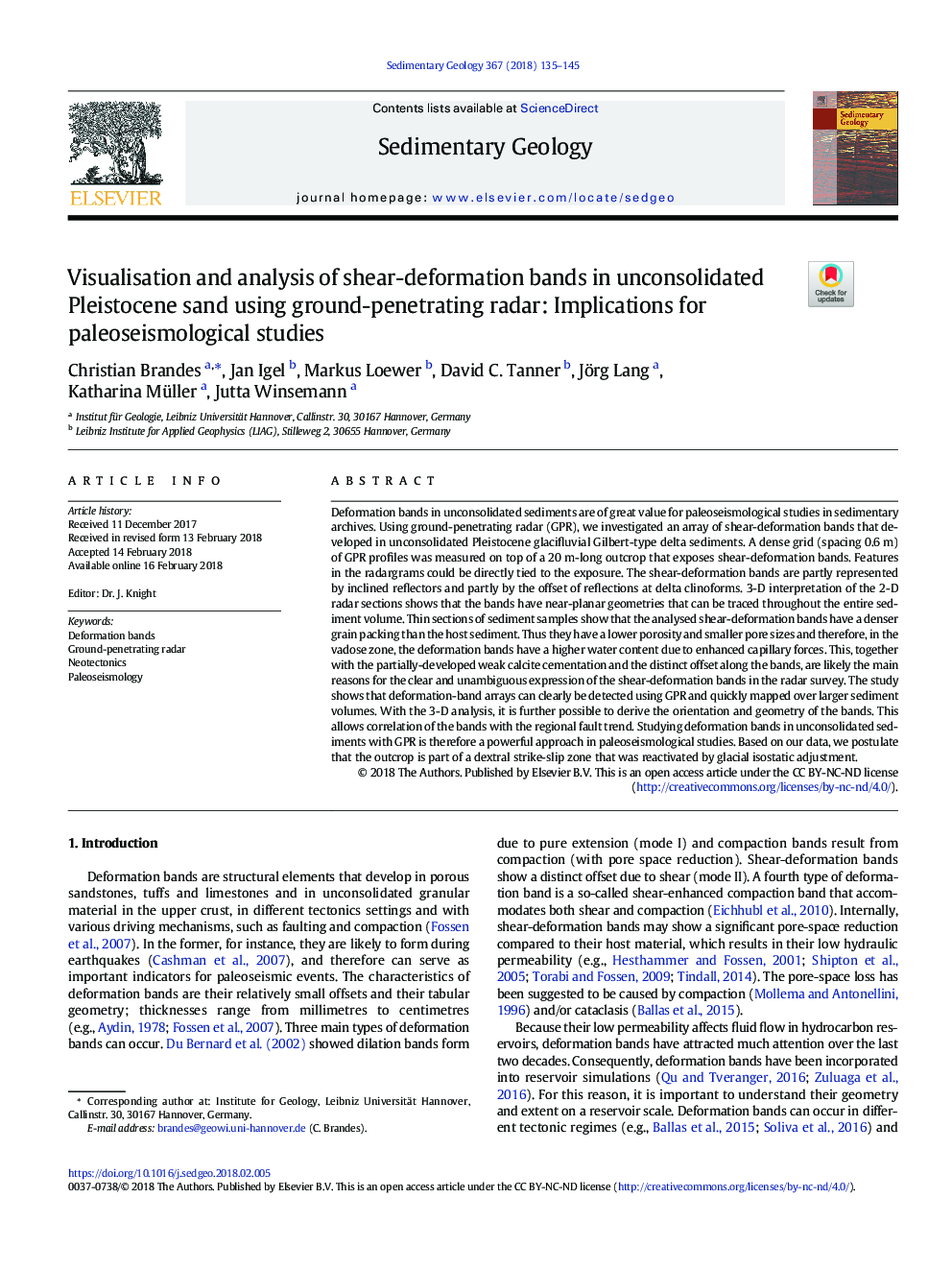| کد مقاله | کد نشریه | سال انتشار | مقاله انگلیسی | نسخه تمام متن |
|---|---|---|---|---|
| 8908530 | 1635996 | 2018 | 11 صفحه PDF | دانلود رایگان |
عنوان انگلیسی مقاله ISI
Visualisation and analysis of shear-deformation bands in unconsolidated Pleistocene sand using ground-penetrating radar: Implications for paleoseismological studies
دانلود مقاله + سفارش ترجمه
دانلود مقاله ISI انگلیسی
رایگان برای ایرانیان
کلمات کلیدی
موضوعات مرتبط
مهندسی و علوم پایه
علوم زمین و سیارات
فرآیندهای سطح زمین
پیش نمایش صفحه اول مقاله

چکیده انگلیسی
Deformation bands in unconsolidated sediments are of great value for paleoseismological studies in sedimentary archives. Using ground-penetrating radar (GPR), we investigated an array of shear-deformation bands that developed in unconsolidated Pleistocene glacifluvial Gilbert-type delta sediments. A dense grid (spacing 0.6â¯m) of GPR profiles was measured on top of a 20â¯m-long outcrop that exposes shear-deformation bands. Features in the radargrams could be directly tied to the exposure. The shear-deformation bands are partly represented by inclined reflectors and partly by the offset of reflections at delta clinoforms. 3-D interpretation of the 2-D radar sections shows that the bands have near-planar geometries that can be traced throughout the entire sediment volume. Thin sections of sediment samples show that the analysed shear-deformation bands have a denser grain packing than the host sediment. Thus they have a lower porosity and smaller pore sizes and therefore, in the vadose zone, the deformation bands have a higher water content due to enhanced capillary forces. This, together with the partially-developed weak calcite cementation and the distinct offset along the bands, are likely the main reasons for the clear and unambiguous expression of the shear-deformation bands in the radar survey. The study shows that deformation-band arrays can clearly be detected using GPR and quickly mapped over larger sediment volumes. With the 3-D analysis, it is further possible to derive the orientation and geometry of the bands. This allows correlation of the bands with the regional fault trend. Studying deformation bands in unconsolidated sediments with GPR is therefore a powerful approach in paleoseismological studies. Based on our data, we postulate that the outcrop is part of a dextral strike-slip zone that was reactivated by glacial isostatic adjustment.
ناشر
Database: Elsevier - ScienceDirect (ساینس دایرکت)
Journal: Sedimentary Geology - Volume 367, May 2018, Pages 135-145
Journal: Sedimentary Geology - Volume 367, May 2018, Pages 135-145
نویسندگان
Christian Brandes, Jan Igel, Markus Loewer, David C. Tanner, Jörg Lang, Katharina Müller, Jutta Winsemann,